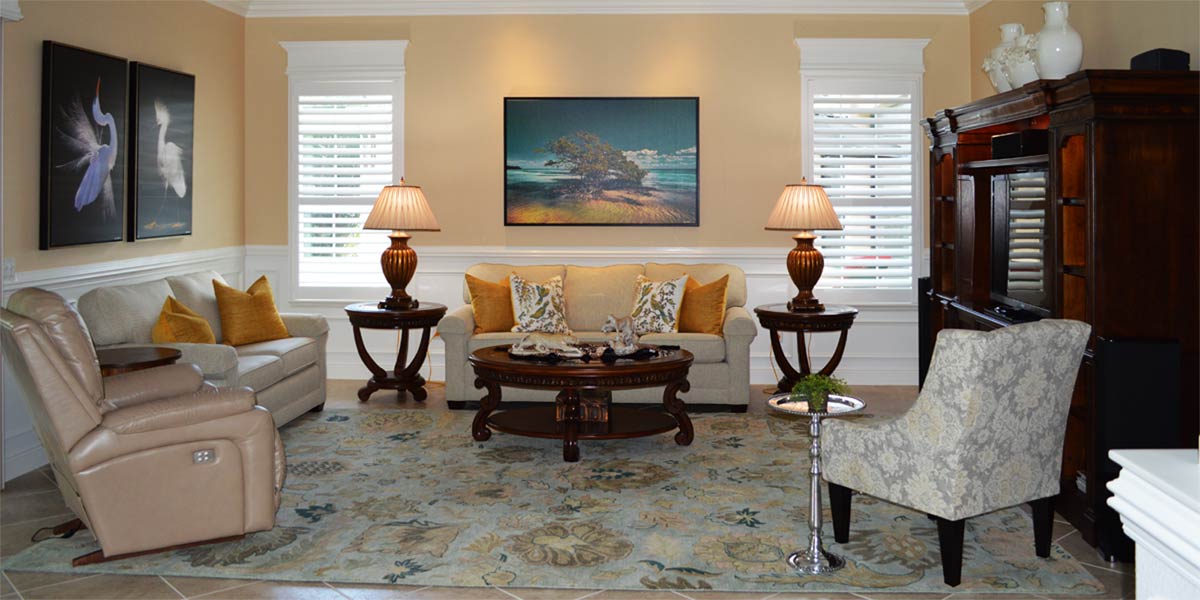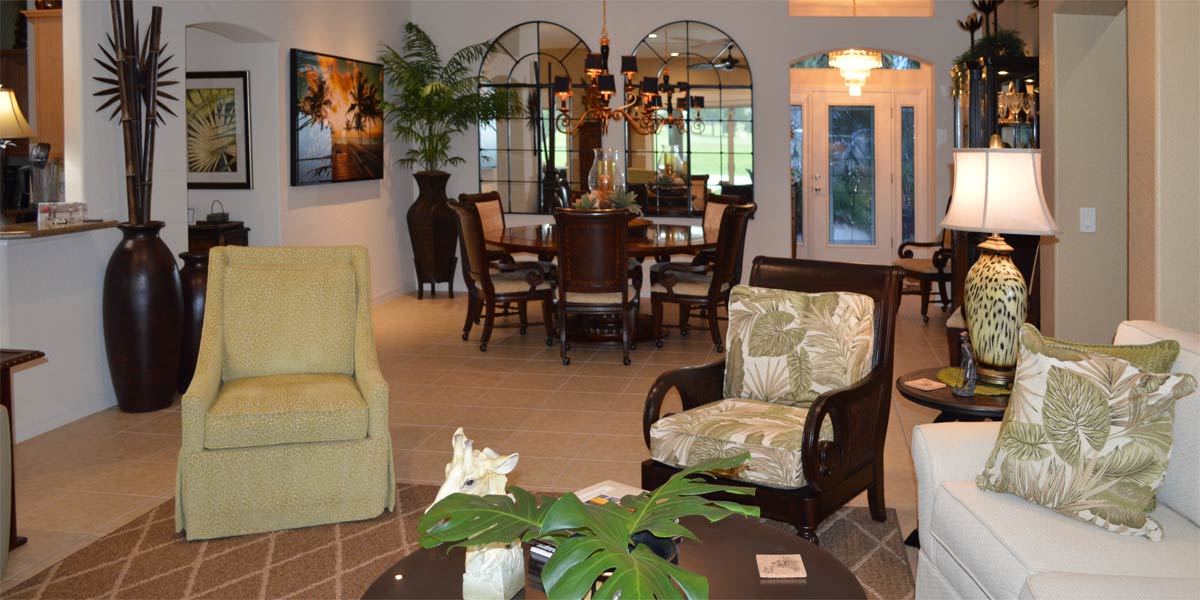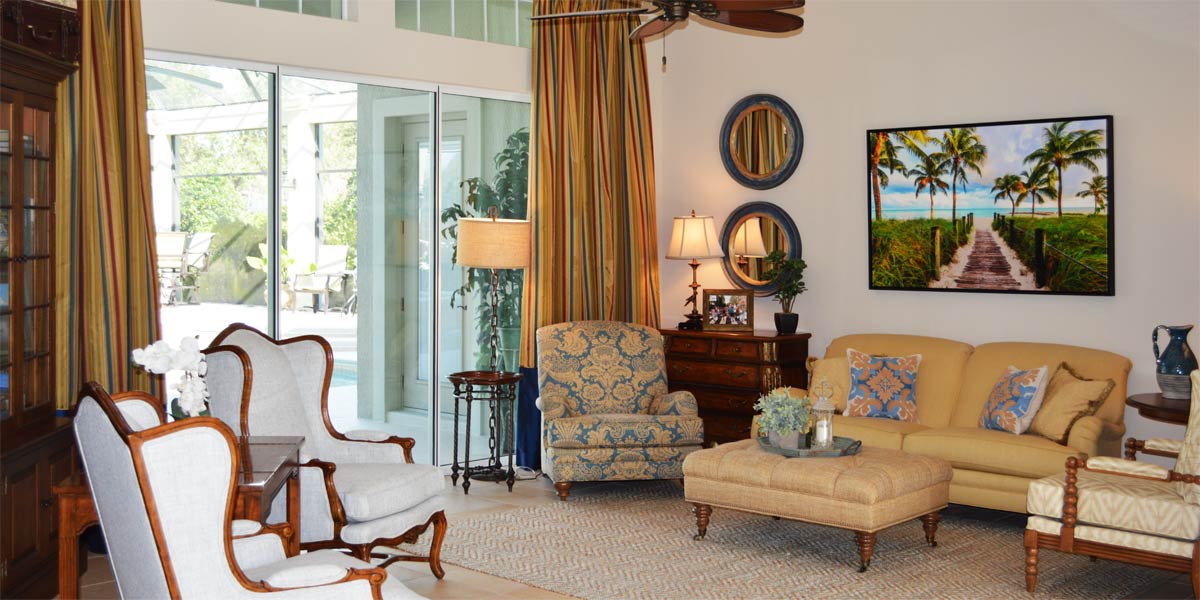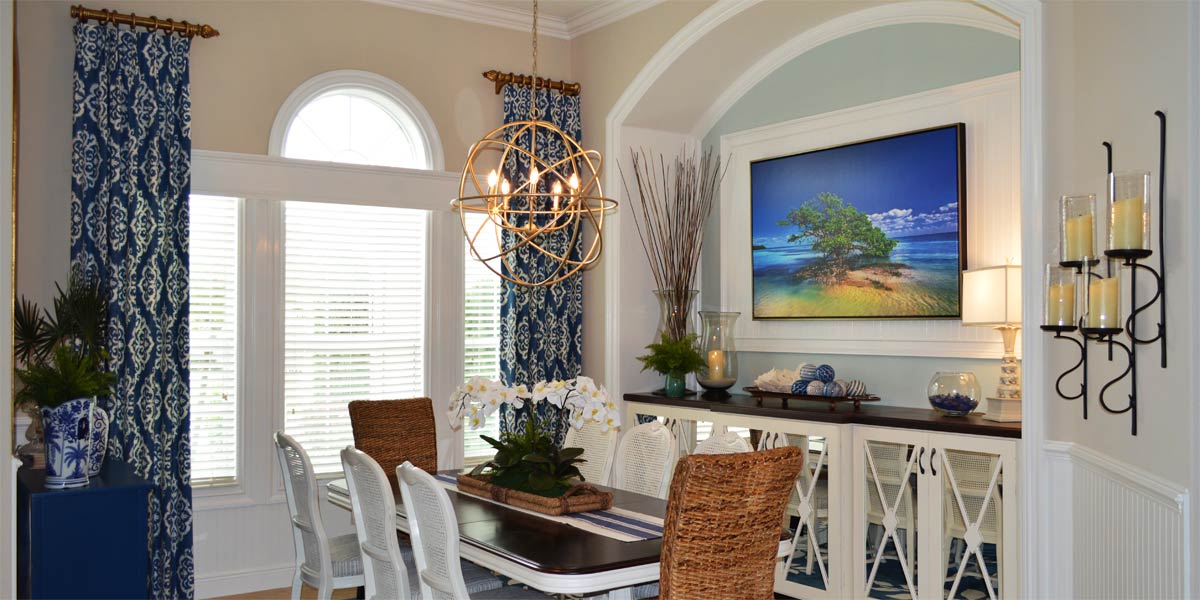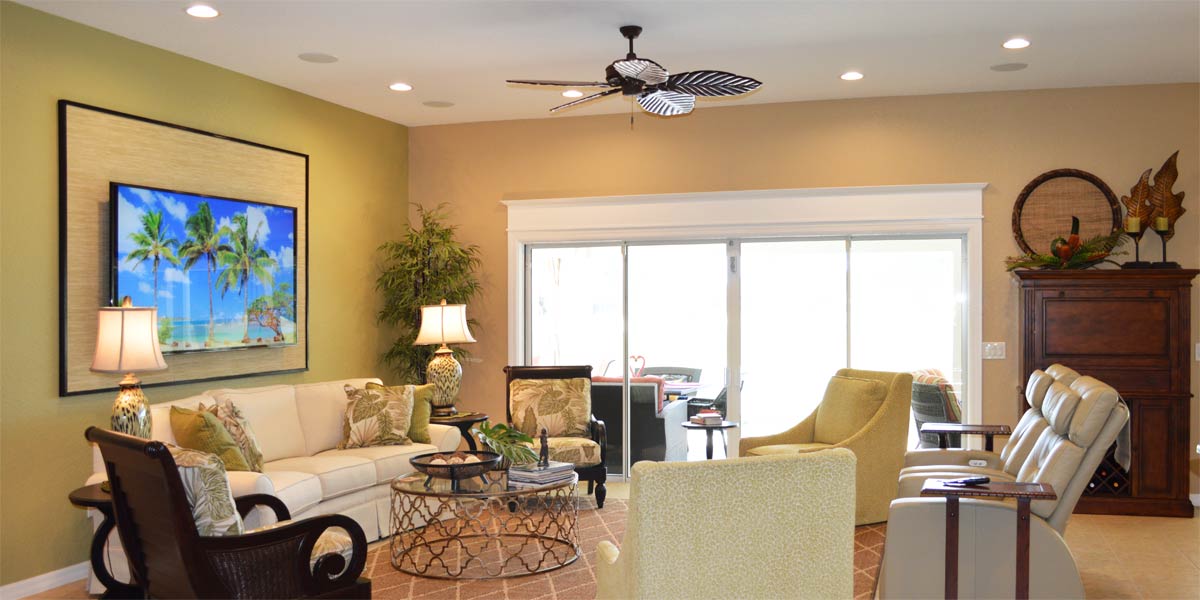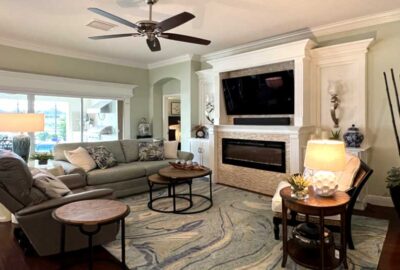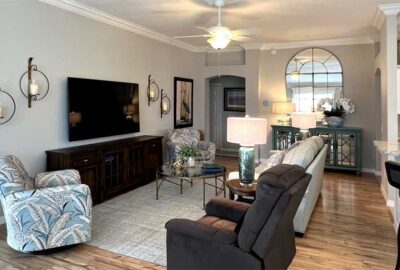Timeless Standards and Principles
The palm tree lined drive of The Breakers Palm Beach is amazing and this time of the year with lights wrapped around the trunks of the palm trees it is positively captivating! One can almost see Model T’s pulling under the porte cochere bringing people with names like Rockefeller, Astor, Morgan, and Vanderbilt for the winter season to The Breakers and what an amazing time in history that would have been. I have been visiting West Palm Beach regularly for the past few months to sell vintage bamboo and rattan to a vendor in the area and this has allowed me to visit Henry Flagler’s winter home, “Whitehall” and on this trip we were visiting The Breakers. The property today is the final re-build of the hotel that was opened in 1926 and still stands to this day. The hotel was built in the Renaissance revival style and that meant the architecture would be classic, timeless and still relevant to this day. These classic and timeless principles have been passed down to us from the Greeks and the Romans and still apply to the world of design today. Let’s take a peek into a few homes that applied classic principles and will remain timeless somewhere in the heart of The Villages.
• Principles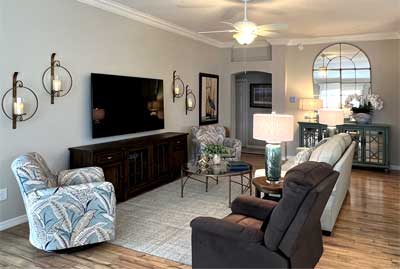
Webster’s dictionary defines a principle as a fundamental truth. These fundamental truths have evolved through time with the observation of nature and art. The principles being emphasis, scale, proportion, balance, rhythm, and harmony; they are not absolutes but guidelines, that when adhered to enhance a room exponentially. There are many violations of these principles in contemporary design and I am often an offender, but you must have a good working knowledge of the rules in order to break them successfully.
• Emphasis
That is a fancy word for focal point. We need a focal point because it is natural. The eye naturally moves toward mass and since this is a natural function of the eye, designers work with it, not against it. Every room must, must, must have a focal point. The focal point has to be strong such as the largest wall or an architectural detail, like a fireplace. Most homes I work in have three rooms in one large area, living room, dining room, and kitchen. The key to success is playing up the largest wall in each space. I like to think of the focal point as the star of the show and everything else in the room is the supporting actors.
• Scale and Proportion
Scale and proportion are the supporting actors since they apply to all the items in the room that enhance the focal point; seating pieces, case goods, artwork and accessories. Scale places everything in reference to the size of the average human body. For example, the average human is between 100 to 200 pounds and is about five to six feet in height. If you are hanging all your artwork at six foot five the scale will be off because the human world is below that. Artwork should be hung at a lower scale such as 60 inches from the floor to the center of the artwork on a blank wall. If you are hanging art over a table there should be no more than 12 inches between the bottom of the frame and the piece of furniture. Your sofa should fit your body not the jolly green giant, unless you are married to the jolly green giant as I am. Proportion is “things related to other things” and it can be relative. For instance, I may have a seven foot wall in length and I need a sideboard to go on that wall. A pleasing ratio, according to the Greek golden section principle is 4:7, so a four foot piece of furniture would look good on a seven foot wall. However, if I find or own a five foot piece of furniture I can use it, even though I am breaking an architectural principle an inch or two will not wreck the room. I tend to use larger furniture for a focal wall and it seems to feel good in the space. Tip: The biggest mistake I see is tiny spindly lamps or very short lamps beside a bed. Look at the size of the bed and when you really look you will see that thin candlestick lamps are not appropriate for the bedside tables. A nice hefty lamp looks much more proportionate in size.
• Balance
Balance is equilibrium in a space. A well balance room will not feel like a ship listing to one side because the furniture is so heavy on one side and light on the other. For instance, if you have a seven foot wall as a focal point and you put a five or six foot entertainment unit on the focal wall, you should place at least a seven or eight foot sofa across the room opposing the entertainment unit so the weight will balance visually. In regards to accessories if you fill the room with lots of small tiny items, the room will look cluttered. I always suggest larger items and less of them to make a balance in the space. If you have small collections, contain them together so they will be interpreted as larger. This is another application of the eye moving toward mass.
• Rhythm
Rhythm is what makes the eye move through the space. Designers accomplish this with the regular reoccurrence of an accent color. One color standing out as an accent and found throughout the room at regular intervals like the beat in a song creates a connection for the eye to follow. The look of a room can feel instantly pulled together when all the fabrics are in play. They are having what I call a “visual conversation” with each other and the common ground is color. Designers often rely on fabrics for the finishing touch to make a space feel complete.
• Harmony
Harmony is accomplished by unity. When all the above principles are working together the finished product should be a harmonious blend of all the beautiful things you selected. Harmony is interpreted with the eyes but it is a feeling in a space. If the space is out of balance, the room will not feel good.
• Opine on Opinions
When designing your house, be careful how many opinions you accept. It is nice to get opinions but consider the source. So many people give opinions based on their personal bias not based on what is good for your home or style. Put your faith in you and your knowledge of the basic principles. If you don’t feel you know the principles well enough to break them, then adhere to them strictly and over time you will develop the skill to break away from the rules, just a bit.
Call Ruth your full service decorator at: 352-804-2056
or Contact Us
